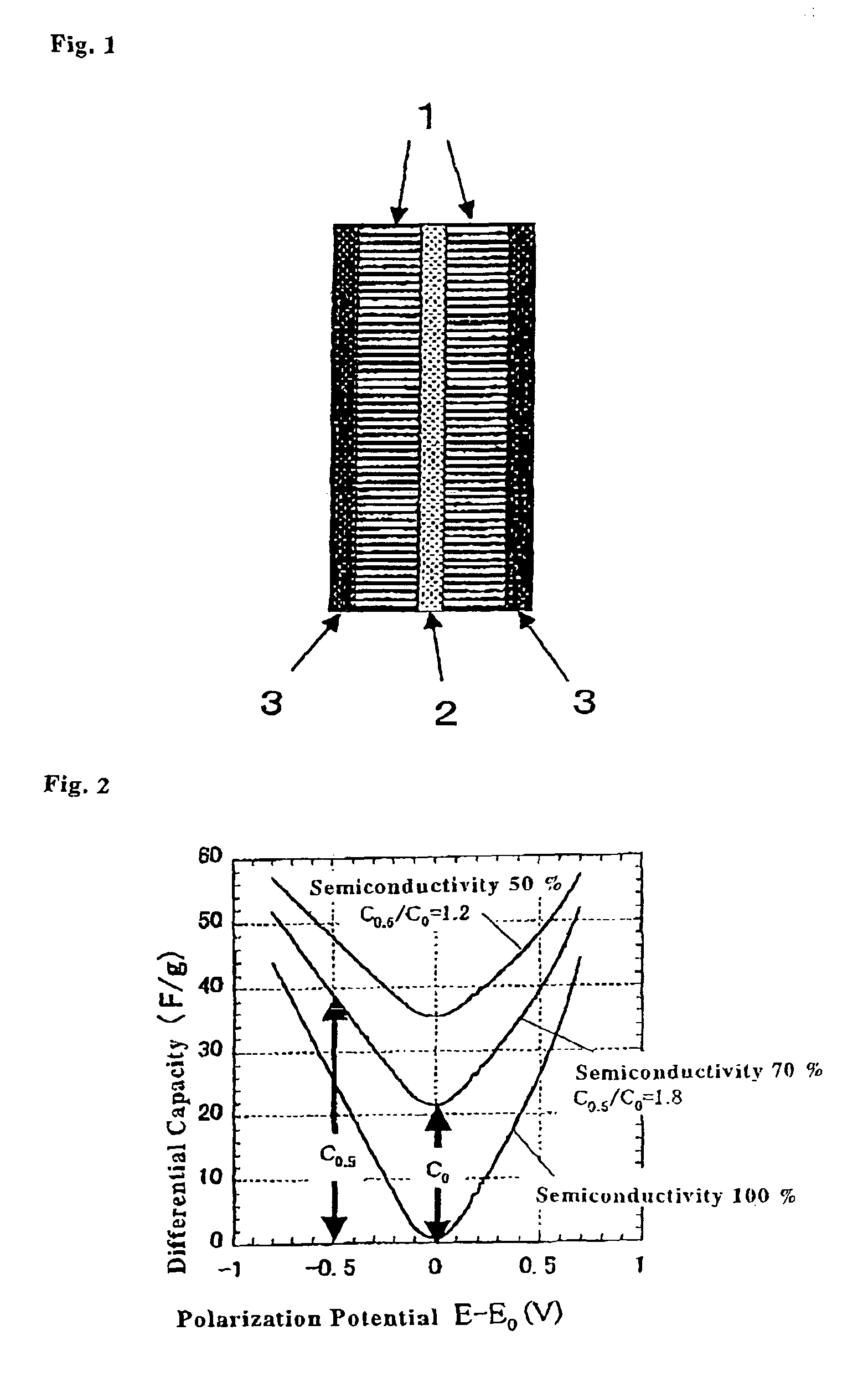Electrochemical capacitor and electrode material for use therein
a technology of electrode material and electrode material, which is applied in the direction of electrolytic capacitor, hybrid capacitor, reduction-oxidation capacitor, etc., can solve the problems of limited electric double-layer capacity per specific surface area of activated carbon, reduced capacitance, and extremely difficult to achieve excellent cycle characteristic of over 100,000 cycles, etc., to achieve specific surface area, increase capacitance, and increase energy density
- Summary
- Abstract
- Description
- Claims
- Application Information
AI Technical Summary
Benefits of technology
Problems solved by technology
Method used
Image
Examples
example 1
[0060]Ethylene was used as a carbon compound, and a carbon nanotube sheet was produced according to a CVD method with addition of a very small amount of water vapor. The specific surface area of the carbon nanotubes of the sheet was 1003 m2 / g; the ratio by weight of metallic carbon nanotubes / semiconductive carbon nanotubes in the sheet was 30 / 70; and the differential capacity ratio C0.5 / C0=1.2.
[0061]Two carbon nanotube sheets (10 mm×10 mm×1 mm thickness) produced in the above was put to face each other via a glass filter having a thickness of 100 μm sandwiched therebetween, and this was further sandwiched between two platinum collectors, thereby constructing a two-electrode type capacitor cell having the structure of FIG. 1. Next, in a dry argon atmosphere in a glove box, the cell was put into 1 M TEABF4 / PC solution under reduced pressure.
[0062]FIG. 4 is a view showing a cyclic voltammogram (CV) in polarization from 0 to 2 V. A capacitor comprising an ordinary activated carbon elect...
PUM
| Property | Measurement | Unit |
|---|---|---|
| charge-discharge voltage | aaaaa | aaaaa |
| withstand voltage | aaaaa | aaaaa |
| specific surface area | aaaaa | aaaaa |
Abstract
Description
Claims
Application Information
 Login to View More
Login to View More - R&D
- Intellectual Property
- Life Sciences
- Materials
- Tech Scout
- Unparalleled Data Quality
- Higher Quality Content
- 60% Fewer Hallucinations
Browse by: Latest US Patents, China's latest patents, Technical Efficacy Thesaurus, Application Domain, Technology Topic, Popular Technical Reports.
© 2025 PatSnap. All rights reserved.Legal|Privacy policy|Modern Slavery Act Transparency Statement|Sitemap|About US| Contact US: help@patsnap.com



